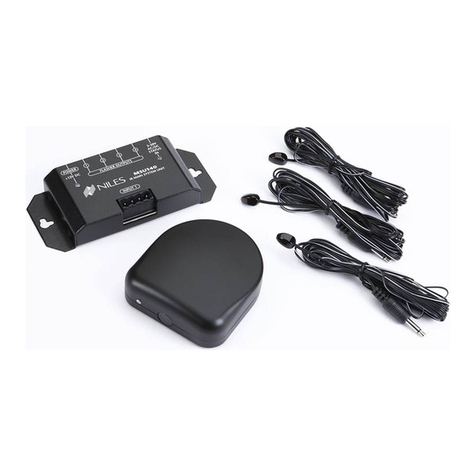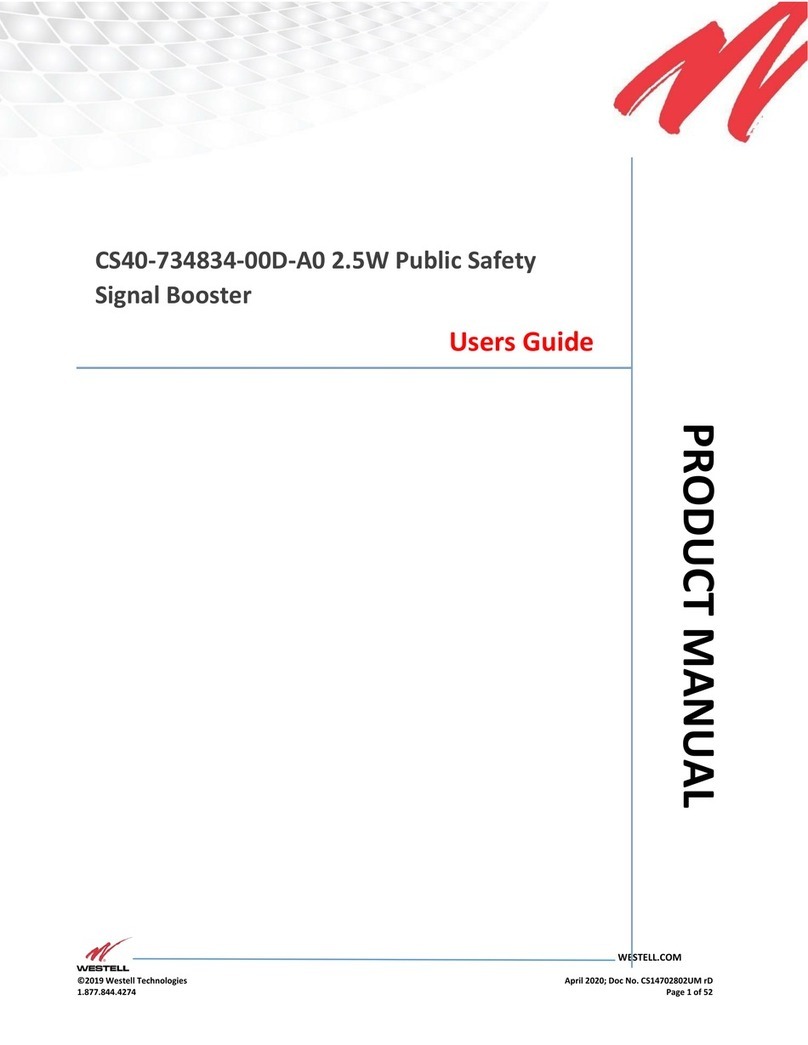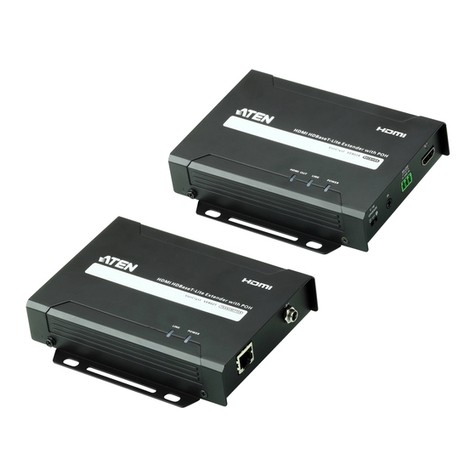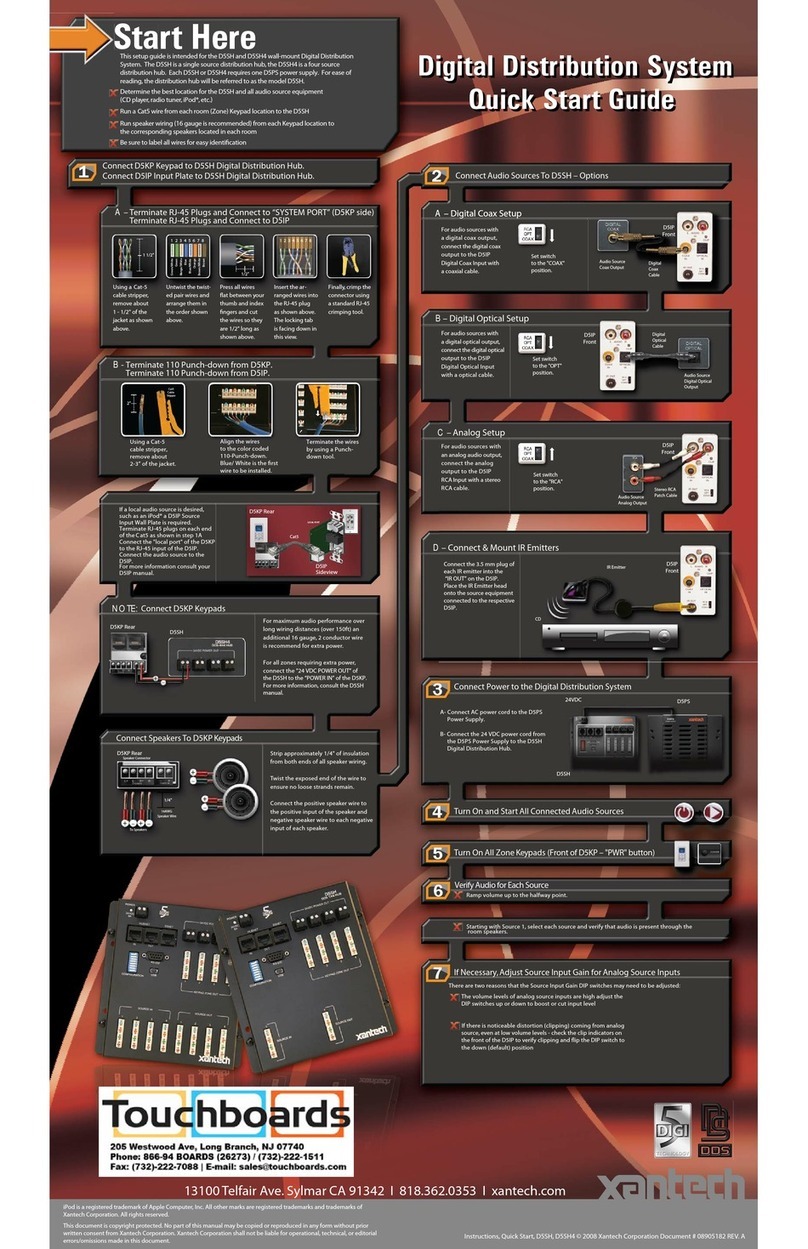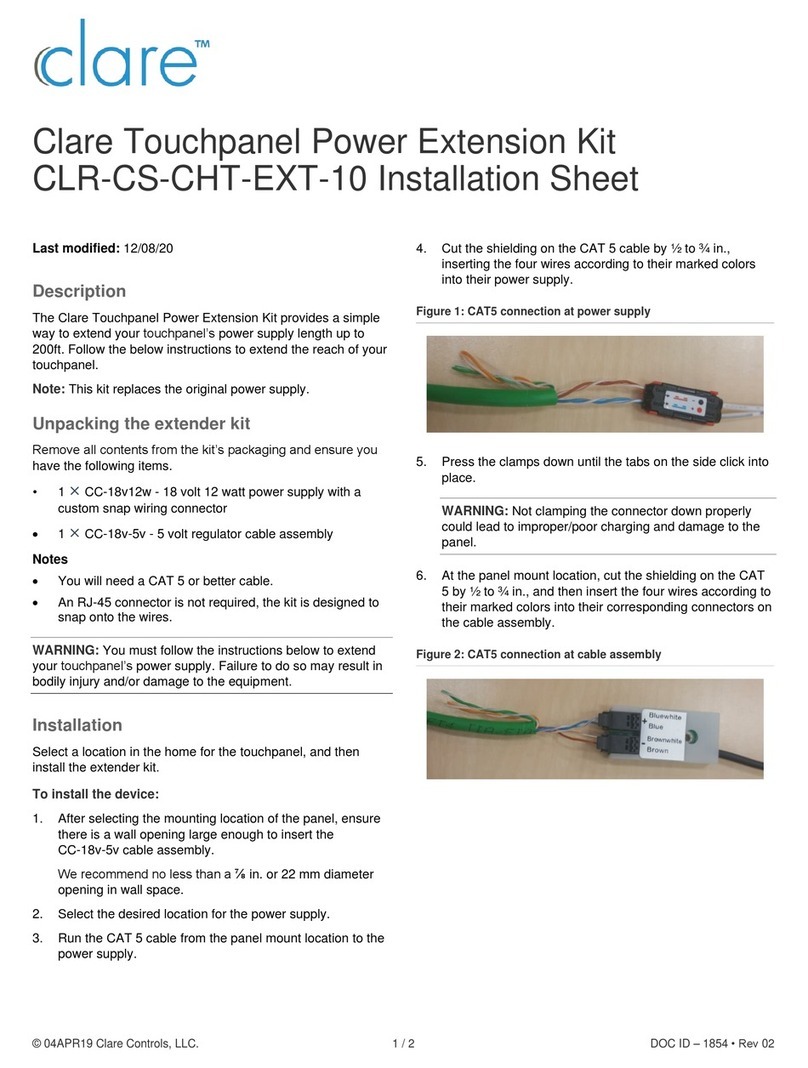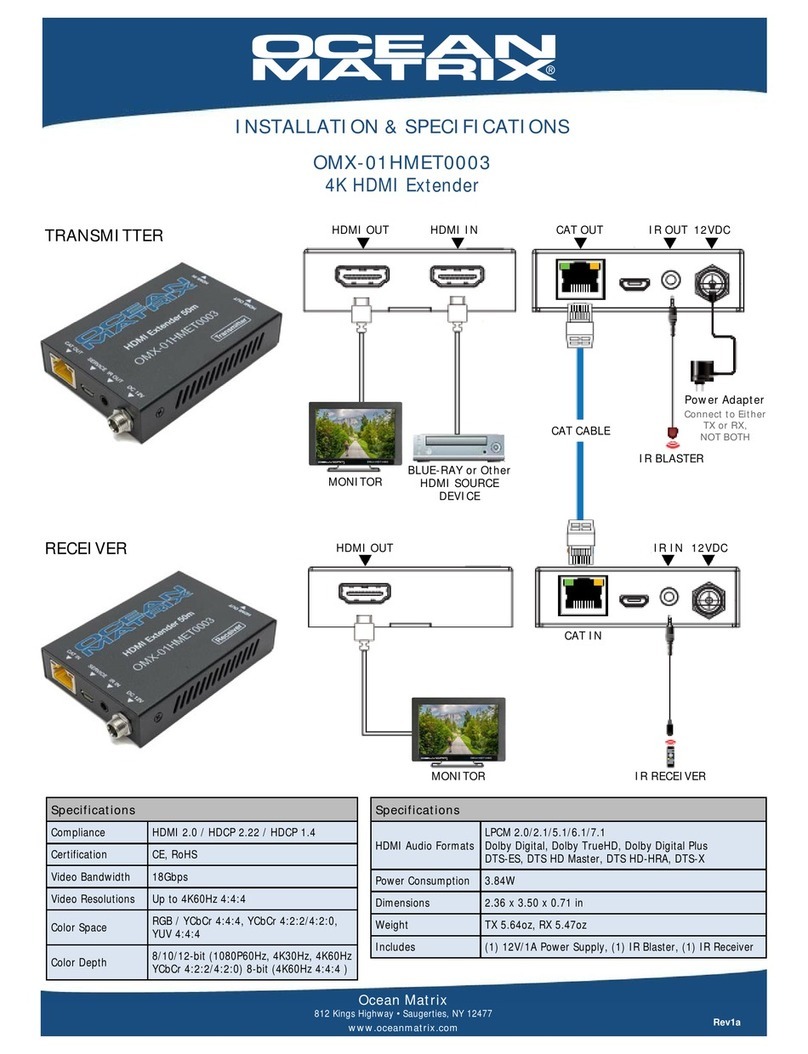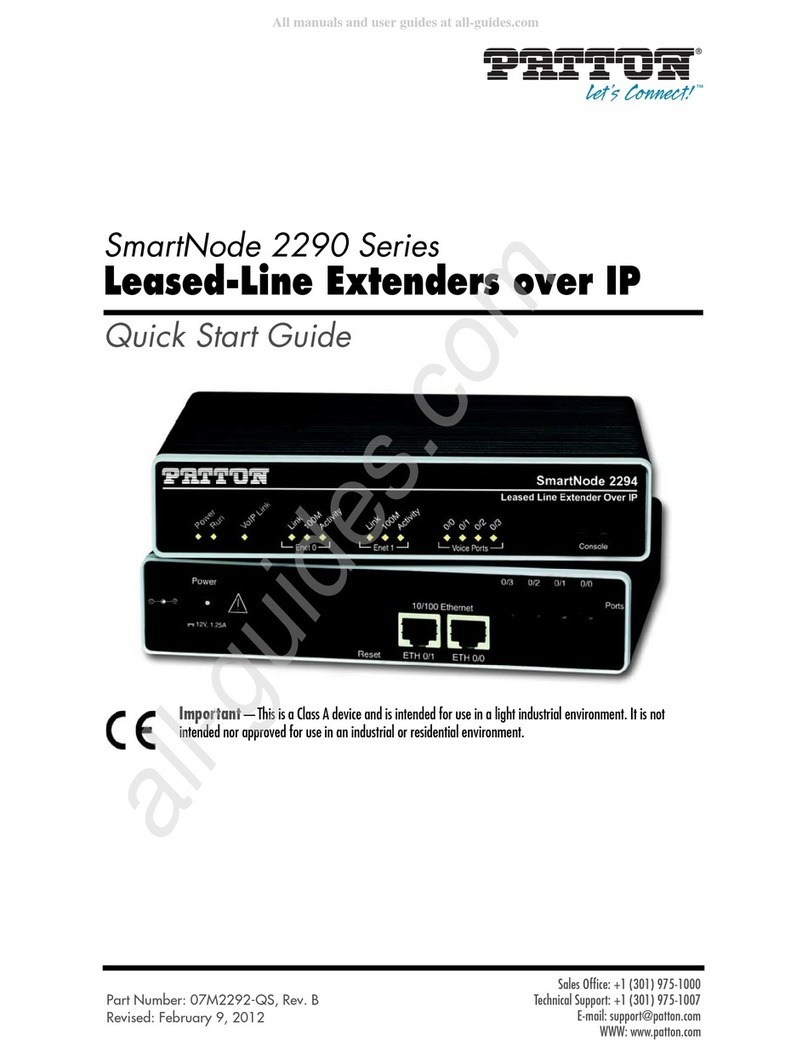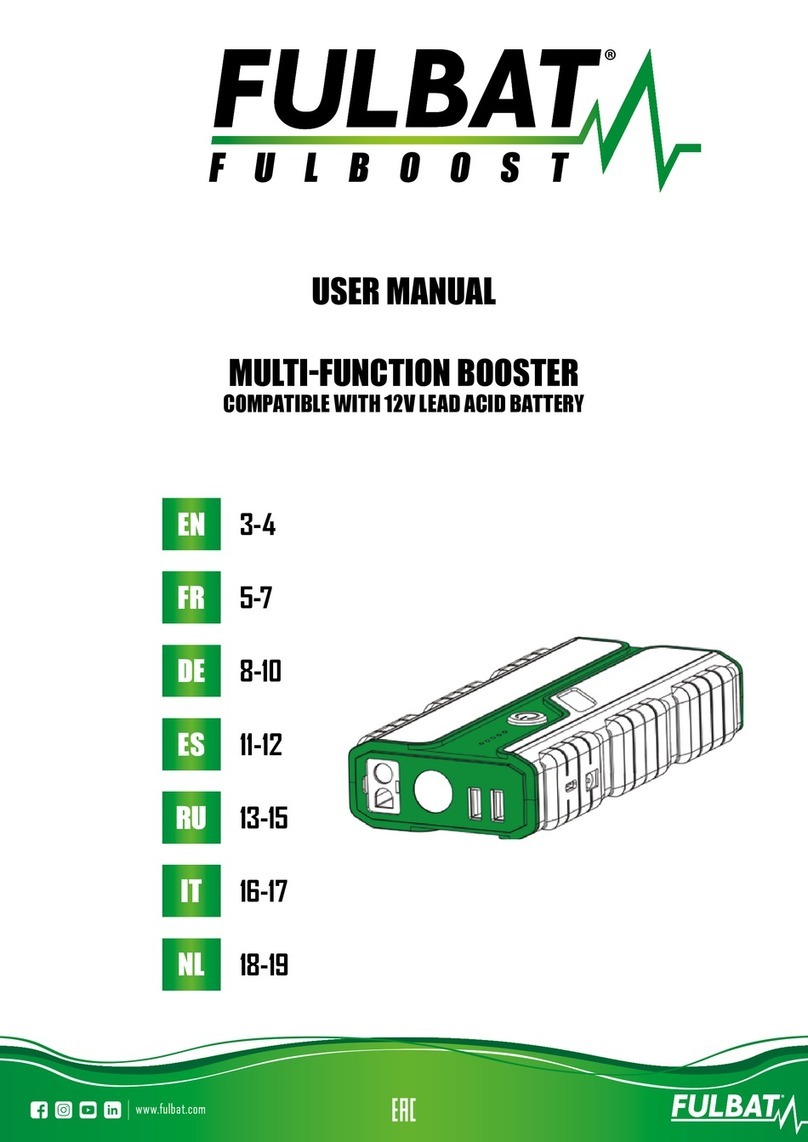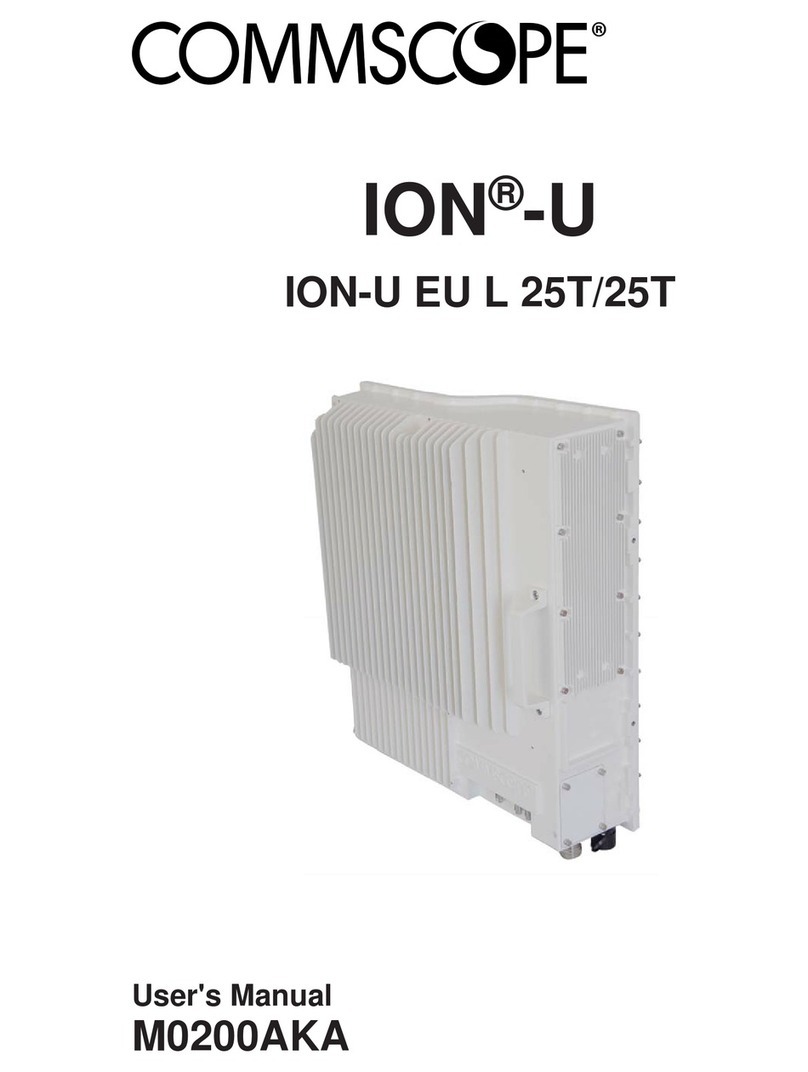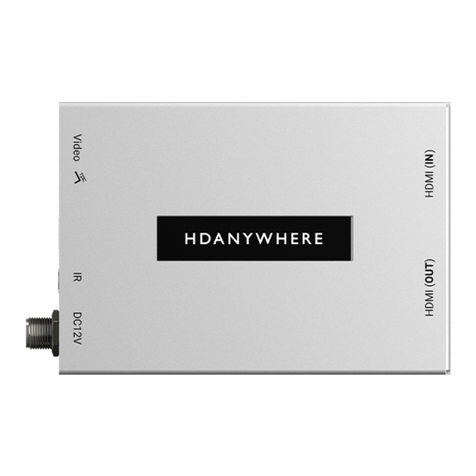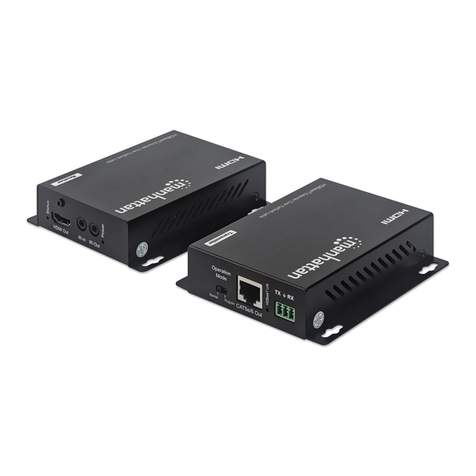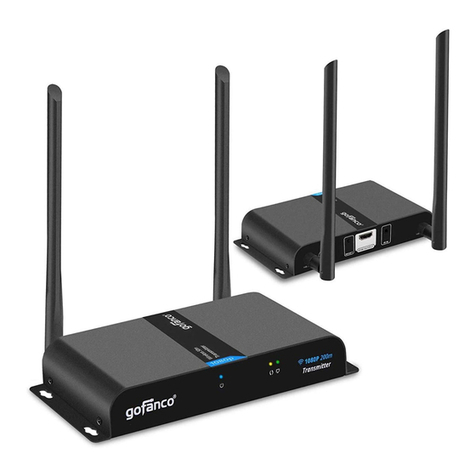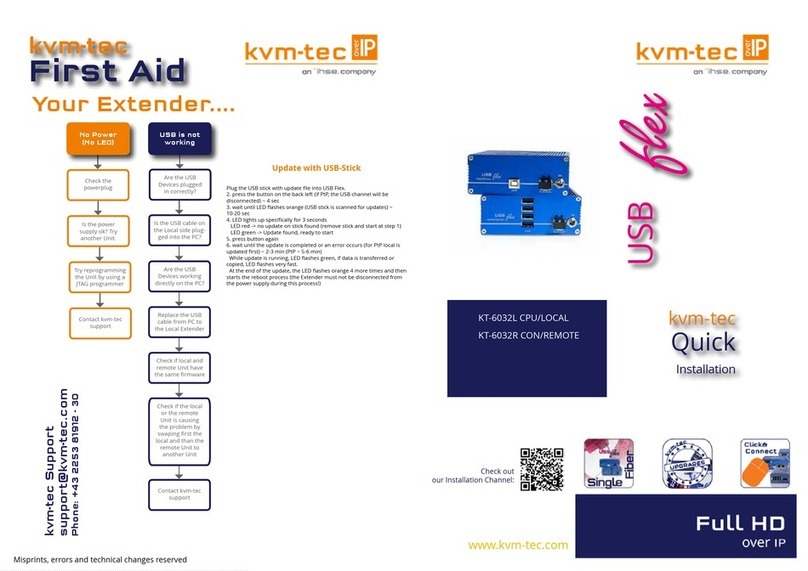Adex ISAIX16 User manual

ISAIX16
ISA Bus Isolation Extender
User’s Manual
Rev E
ISAIX16
ISA Bus Isolation Extender
User’s Manual
Rev E

ISAIX16 User’s Manual ISAIX16 User’s Manual
Adex Electronics Adex Electronics
PREFACE
ISAIX16 is a 16 bit Industrial Standard Architecture (ISA) bus
isolation extender. It allows ISA adapter boards to be added or
removed from the ISA system bus without having to power down
the system. It offers time and labor cost savings in product
development and production board testing. It also serves to
protect the motherboard from being damaged during testing.
Operation of the ISAIX16 extender can be controlled by on-board
toggle switch or by external TTL input signal. User is required to
provide initialization routines to restore the state of the board
under test during successive testing.
Product Options:
-T for additional connector at right angle.
Related Products:
ISASX2 ISA wearout Extender.
ISABK1 ISA Tie down bracket.
(C) Copyright 1999, Adex Electronics. This manual is
copyrighted. All rights reserved. No part of this document may
be reproduced, copied, translated or reduced by any means,
without permission given beforehand in writing from Adex
Electronics.
Made in USA. Rev E 1/1999
ISAIX16 is a trademark of Adex Electronics.
ISA and Industrial Standard Architecture are trademarks of IBM Corp.
All other products mentioned in this manual are trademarks of their respective
manufacturers
TABLE OF CONTENTS
Title Page
Product Specifications and Features 4
ISAIX16 Operating Instructions 5
Fuse and Header Definition 6
ISAIX16 Component Side Outline 8
ISAIX16 Solder Side Outline 9
Theory of Operation 10
Local and External Control 11
On-Board Toggle Switch Operation 11
External Toggle Switch Operation 12
External Logic Control Operation 12
Voltage Margin, Current Measurement
and External Power Source 13
Troubleshooting and Self Service 14
Board Initialization 16
Mounting of Bus Isolation Extender 17
Appendix 19
Using the Parallel Port as External TTL Control 20
ISA Bus Pinout 22
Warranty 24

ISAIX16 User’s Manual ISAIX16 User’s Manual
Adex Electronics Adex Electronics
Product Specifications:
Bus: ISA (Industrial Standard Architecture) 16 bit bus.
Power: +5V with 4 amp slow blow plug fuse.
-5V with 1.6 amp slow blow plug fuse.
+12V with 1.6 amp slow blow plug fuse.
-12V with 1.6 amp slow blow plug fuse.
Plus short circuit sensing logic on +5 and +12V.
Control: Single toggle switch or external TTL controls.
Signal Delay: Less than 500 picosecond (250 picosecond max.
through the buffer).
Environment: 0-60 degree C (operating and storage).
Dimension: Length 7.2 inches; Height 5.2 inches; Width 0.6
inches (Not including bracket).
Product Features:
•Total power and signal isolation.
•No disturbance to the system bus during bus isolation and
reconnection.
•Less than 500ps signal delay (isolation buffer + trace delay).
•Minimum voltage drop.
•Single switch operation or external TTL control signals.
•Voltage margin and current measurement.
•Over voltage and over current protection on power lines.
•Pluggable fuse allows easy replacement and change to other types
and values of fuses.
•Fused power status green LED indicators.
•Short ckt sensing on +5 and +12V with auto power shut off.
•Reset pulse generation during power on.
•Flashing operating red status LED.
•Two-tone adjustable volume speaker for board status.
•Header pins for logic analyzer hook up.
•Supports low cost wearout extender.
•Optional right angle extender connector.
•Durable extender connector.
•Quality multilayer construction.
-4-
ISAIX16 OPERATING INSTRUCTIONS
1. Insert the extender into an ISA expansion slot on an ISA
motherboard. Secure the extender to the system enclosure with
mounting bracket.
2. Power up the system, SW1 switch can be in either position, all green
LEDs should light to show the state of the fused power.
3. Test the extender by switching the SW1 switch up and down. The
red LED should be flashing with SW1 in up position, indicating bus
connection. The speaker should also buzz about once per second.
Adjust the volume of the speaker via the trim pot by the speaker.
4. Add or remove add-on boards to the extender only when the
SW1 switch is in down position, the red LED is not flashing and
the speaker is not buzzing (bus isolated).
5. Run test to the add-on boards with SW1 switch in the up position..
6. To make current measurements without the fuse, remove the
corresponding plug fuse and place an ampere meter across pin 1
and pin 3 of the fuse socket pins. To make measurement with the
fuse, insert fuse at pin 2 and pin 4 of the socket pins, and connect
the ampere meter across pin 1 and pin 4 of the fuse socket pins.
7. To make voltage margin tests without the fuse, remove the
corresponding plug fuse and connect external voltages to pin 3 of
the socket pin and connect external ground to system ground. To
make voltage margin with the fuse; move fuse to pin 2 and pin 4 of
the socket pins and connect external voltage to pin 4 of the socket.
Warning! Pin 1 of the fuse sockets should not be connected,
because they are tied directly to the system power.
8. The green LEDs at the upper right hand corner indicate the status of
the fused power. If not lit, check the corresponding fuses and
replace them accordingly.
9. To remove the adapter boards from the extender, one should be
careful not to lift the extender out of its system expansion slot. Keep
the extender down while removing the adapter board and make sure
the extender is turned off.
-5-

ISAIX16 User’s Manual ISAIX16 User’s Manual
Adex Electronics Adex Electronics
FUSE and PIN HEADER DEFINITION
Fuse Socket
1
2
3
4EXTERNAL POWER
FUSED POWER
SYSTEM POWER
W1 +5V
W2 -5V
W3 +12V
W4 -12V
W6, Speaker Jumper
Jumper in - Speaker will buzz at approximately once per
second during normal operation while bus signal
and power is fully connected. It will also generate a
continuous tone if logic detects a short circuit
condition.
Jumper out - Speaker will not buzz during normal operation, but
will still generate a continuous tone if logic detects
a short circuit condition.
To adjust the volume of the speaker, turn the trim pot by the
speaker. Turn counter clockwise to increase the sound and turn
clockwise to decrease the sound.
-6-
W7 Pin Headers
1 2
9 10
1 #Power_Control (Internal)
2 +5V
3 #Signal_Control (External Input, Low enable)
4 Key
5 #Power_Control (External Input, Low enable)
6 Gnd
7 Gnd
8 Power_Control (External Input, High enable)
9 LED-
10 LED+
# indicates low active input.
Pin 1 and pin 3 are jumped together in default to allow single
toggle switch operation, which both power and bus signals are
turned on together. User may connect an external toggle switch
to pin 5 or an external TTL high signal to pin 8 to control the
board.
To control the bus signals separately from the bus power, remove
the jumper at pin 1 and pin 3 and connect external TTL control at
pin 3. Power should be connected first, then the bus signals.
The on-board toggle switch should be at down (off) position, if
external TTL control is used.
-7-

ISAIX16 User’s Manual ISAIX16 User’s Manual
Adex Electronics Adex Electronics
-8-
-9-

ISAIX16 User’s Manual ISAIX16 User’s Manual
Adex Electronics Adex Electronics
THEORY OF OPERATION
The Bus Isolation Extender provides bus signals and power
isolation between the system motherboard and the add-on board
on the extender. The signals are isolated using state of art analog
switches that allows bi-directional signal flow. When the analog
switches are turned off, the bus signals at the extender side are
isolated from the system bus. When the analog switches are
turned on, the bus signals are connected. The analog switch
provides no signal "buffering". That means, the bus signals are
not reconditioned at TTL levels, nor are they redriven by any
active amplifier. Any AC/DC signal loading on the add-on board
will have a direct effect on the signal lines on the system
motherboard. The analog switch introduces only less than 250
picoseconds delay to the signals. Such minimal delay makes the
analog switch suitable for very fast bus operation.
The power isolation is implemented using MOSFETs. The
MOSFETs are biased to allow slow ramping up of current through
the Bus Isolation Extender to the add-on boards without causing
a power surge or glitch to the system power. When the voltage
on the +5V line on the add-on board reaches above 4.5 volts, the
logic on the extender will turn on the analog switches to connect
the bus signals. When the Bus Isolation Extender is switched off,
the logic on the extender board will disconnect the bus signals
immediately, and shut down the power slowly.
In addition, a 16ms reset pulse is generated to the add-on board
on top of the extender, whenever the extender is switched on. If
the system issues a reset pulse while the bus is connected, the
extender will pass that reset pulse to the add-on board without
disconnection or reconnection.
An on-board red status LED will blink about twice a second,
when the power and the signals are completely connected
between the add-on board and the system bus. The red LED will
stay off, if the Bus Isolation Extender is turned off or if the +5 and
+12 volts do not reach operating voltages within 16ms after
power up.
-10-
During operation, if a short circuit condition is developed between
+5 and +12V to ground, the logic will shut off the power and the
red LED. The speaker will buzz in a continuous tone to alert the
operator. User needs to switch the extender off, to reset the short
circuit logic.
The add-on boards should be inserted or removed from the
extender only when the extender is switched off and the red LED
is not blinking and the speaker is not buzzing. Serious damages
to the system, extender and the add-on board could happen
if the add-on board is inserted or removed when the bus is
still connected.
LOCAL and EXTERNAL CONTROL
The Bus Isolation Extender has an unique external control
feature. This feature is very useful in production environment and
it can be easily implemented in many ways. It allows external
toggle switch or TTL logic inputs to control the operation of the
extender. When used with proper software, this feature helps to
automate the test process without requiring manual switching by
the operator. This external control feature is accessible through
the W7 header located by the on-board toggle switch. The header
is keyed for ribbon type of connector interface. The 2X5 header
has the pins defined as on page 7 under W7 Pin headers.
ON-BOARD TOGGLE SWITCH OPERATION
This is the default operation mode as configured by the factory.
This configuration allows single toggle switch operation without
any external connection. A jumper is installed between pin 1 and
pin 3 of the W7 header. It requires an operator to manually
toggle the switch up for bus connection and toggle it down for bus
isolation. When the switch is toggled up, both the power and the
signals are connected by the on-board logic.
-11-

ISAIX16 User’s Manual ISAIX16 User’s Manual
Adex Electronics Adex Electronics
EXTERNAL TOGGLE SWITCH OPERATION
An external toggle switch can be connected between pin 5 and
pin 6 of the W7 header to simulate the on-board toggle switch. In
this configuration, the on-board toggle switch should be turned off
(down position), and the jumper remains in pin 1 and pin 3 of W7
header. The external switch can be mounted anywhere outside
the chassis for easier access. An external LED can also be
connected through pin 9 and pin 10 of the W7 header, so it can
provide a status outside the chassis. A blinking LED is
recommended instead of regular LED. The on-board LED and
the toggle switch do not need to be removed in this mode of
operation.
EXTERNAL LOGIC CONTROL OPERATION
The Bus Isolation Extender can also be controlled by external
TTL compatible signals. If the jumper remains on pin 1 and pin 3
of W7 header, a single TTL low control line connecting to pin 5 or
a TTL high signal to pin 8 of W7 header can control both the
power and signal isolation and connection as the toggle switch. If
the jumper on pin 1 and pin 3 of W7 header is removed, then two
TTL control lines can be used to control the bus signals and the
power separately. The TTL control line connects to pin 5 or pin 8
will control the power and the TTL control line that connects to pin
3 will control the signal. The TTL control lines can come from
any digital output source, such as the output pins of the parallel
printer port in the CPU system. If the external TTL control lines
are from sources outside the same CPU system, the ground pins
on pin 6 or pin 7 of the W7 header should be connected to the
signal ground of the external sources. The power should be
connected first, then followed by the bus signals.
Notice that pin 5 allows a TTL low signal to power up the
extender, while pin 8 allows a TTL high signal to power up the
extender. For system that requires the extender to be powered up
from cold start, user can choose from available sources of either
initial high or initial low signal to bring the extender up.
-12-
VOLTAGE MARGIN, CURRENT MEASUREMENT AND
EXTERNAL POWER SOURCE
The ISAIX16 Bus Isolation Extender is provided with pluggable
slow blow fuses. One 4 amp fuses is used for the +5V and three
1.6 amp fuses are used for the -5V, +12V, and -12V. User can
perform voltage margin and current measurement with or without
the fuses. Without using the fuse, external power can be
connected to pin 2 or pin 3 of the fuse sockets to provide voltage
margin test to the add-on boards on the extender. By moving the
fuse to pin 2 and pin 4 location, user can provide power to pin 4
and still protected by the fuse. The pin 1 of these jumpers are
tie directly to the system power and they should not be
connected to external sources. When external power are
applied through the fuse sockets, the current are still controlled
by the MOSFETs, which regulates the ramping of the voltages.
A minimum of +4.5V on the +5V power line is required to
maintain the operation. Otherwise the logic on the extender will
shut down the analog switches and isolate the bus signals. A
short circuit sensing logic is also built in to protect the system.
The short circuit logic will sense shorts on +5V and +12V and
automatically shut off all power. The shorts can be either
introduced accidentally during test or may already exist on the
board under test. In short circuit condition, the speaker will
generate a continuous tone to alert the user. In normal
condition, the speaker will buzz once a second to alert the user
that the Bus Isolation Extender is powered up.
An ampere meter can be connected between the fuse socket pins
with or without the fuse to measure the current consumed by the
add-on board on top of the extender. The leads of the ampere
meter should be as short as possible, to avoid excessive voltage
drop below 4.5V.
User may change the fuses to other type, as long as the 5V will
not drop below 4.5V when the add-on board draws maximum
current.
-13-

ISAIX16 User’s Manual ISAIX16 User’s Manual
Adex Electronics Adex Electronics
TROUBLESHOOTING AND SELF SERVICE
It is possible the Bus Isolation Extender could be damaged during
operation. Our experience has shown, two of the most common
problems associated with the Bus Isolation Extenders are blown
fuses and blown buffer ICs. Such failures are usually caused by:
1. Users accidentally pull the add-on board while the bus is
still connected. This happens especially when the user is
not yet used to the procedure, and occasionally forget to
switch the extender off while removing the add-on board.
One must observe the red LED to make sure it is not
blinking or listen to the speaker before adding or removing
the add-on board. This action will cause the fuses and the
buffer ICs to blow; especially, the one have signals next to
the power pins. Because the add-on board could be
removed at an angle, which shorted the power pins to the
signal pins nearby.
2. The extender is lifted or wiggled side to side while add-on
board is being removed or added. This happens if the
extender is not tied down firmly. It is very important for user
to find an appropriate way to hold down the extenders using
brackets or fixtures in open or closed chassis environment,
to prevent this to happen. Since the Bus Isolation Extender
is still connected to the system bus, this will cause sparking
in both power and signal pins that will most likely damage
the buffer ICs.
3. Shorted power to signal pins or signal to signal pins on the
add-on board. This condition will usually cause an overload
to the buffer IC and damage it. Do not test the failed add-
on board on the Bus Isolation Extender again until the
cause is corrected.
4. Extender connector pins are damaged due to wearout or
rough handling. We strongly recommend the use of Bus
Wearout Extenders, especially in production environment.
-14-
We would recommend the following steps for user self
troubleshooting and field testing before returning the extender for
factory service.
1. Check the extender connector pins for any physical
damage, and correct them if possible.
2. Check the fuses for continuity and replaced them if not.
3. Check for all power to ground short. There are over-voltage
protection components on-board that will short to ground
when fired in severe sparking conditions. Locate and
replace the components.
4. Visually inspect the buffer ICs for physical cracks, burn
marks, etc. When the buffer IC is damaged, it will usually
smoke while the bus is being connected. The damage could
be caused by sparking or ESD from previous operation.
Replace the damaged buffer ICs and try again.
5. Check buffer ICs by looking at the buffer pins with or
without the add-on board and turn on the extender. The IC
has pin 1 and 10 grounded, pin 20 connected to VCC and
pin 19 as control (low for connect). Pin 2-9 and pin 18-11
are the corresponding buffer pins. Test the pins using a
logic probe. The probe should indicate the same condition;
H, L or blinking on both pins of the buffer pair. Replace the
buffer IC, if the condition is not the same.
Our experience shows the buffers ICs at four corners are most
likely to be damaged in the operation. Adex Electronics will assist
customers over the phone to locate the damaged components
and recommend further actions. Adex Electronics can also
provide the components as spare parts to the customers. Each
bus isolation extender is provided with a bag of spare parts, with
2 fuses of each type and 2 buffer ICs.
-15-

ISAIX16 User’s Manual ISAIX16 User’s Manual
Adex Electronics Adex Electronics
BOARD INITIALIZATION
Bus Isolation Extender isolates power and bus signals between
the add-on board and the motherboard. Each time the toggle
switch is turned off, the power to the add-on board is lost.
Therefore, the information in the registers and memory on the
add-on board will also be lost. For the next add-on boards to be
tested again, the add-on board will need to be reinitialized, after
the powers are reconnected. User will need to develop an
initialization routine to restore the information back to the add-on
board, before running the test. It can be done in a batch file
where the initialization routine is placed before the test routine.
The initialization routine can search for a previous saved
configuration file and use it to reinitialize the add-on board. The
test software should display the test results and messages to tell
the operator when to remove and add another board for test, and
how to restart the test.
Every time the Bus Isolation Extender is power up or down, the
on-board logic will resynchronize itself to disconnect or reconnect
properly. A reset signal will also be generated to the add-on
board under test during reconnection. In automated system, the
initialization software should allow approximately 20 ms delay
after the extender is turned on, before attempt to reinitialized the
board. In manual toggle switch operation, the user should wait
until the red LED is blinking before reinitialization. In software
control operation, the LED- signal could be sensed externally at
logic low state at least twice contiguously by the software to
confirm the bus is reconnected, before reinitialization. During
disconnect, the user should wait for the red LED to stop blinking
before removing the add-on board under test. In software control
operation, the LED- should be sensed high at least twice
contiguously before putting out messages to remove the board.
-16-
MOUNTING OF BUS ISOLATION EXTENDER
The Bus Isolation Extender incorporates very fast CMOS buffers
for isolation of bus signals between the add-on board and the
motherboard. These CMOS buffers are extremely sensitive to
voltage spikes and can be easily damaged by Electrostatic
Discharge (ESD) or any sparking due to intermittent contacts. It
is necessary for users in production environment to mount the
Bus Isolation Extender firmly against a common platform where
the motherboard is mounted. For in chassis testing, a fixture or a
bracket should be developed to hold the Bus Isolation Extender
to the chassis. For out of chassis environment, user should tie the
motherboard and the Bus Isolation Extender down against a
common platform. Whatever the fixture or bracket design is
used, one should not allow the Bus Isolation Extender to be lifted
with the add-on board nor to wiggle side to side.
An inexpensive and simple bracket has been designed by Adex
Electronics for in chassis use and they can be ordered with part
number ISABK1. The bracket design, however is free to user as
reference.
-17-

ISAIX16 User’s Manual ISAIX16 User’s Manual
Adex Electronics Adex Electronics
- Blank -
-18-
Appendix
-19-

ISAIX16 User’s Manual ISAIX16 User’s Manual
Adex Electronics Adex Electronics
USING PARALLEL PORT as EXTERNAL TTL
CONTROL
The following information on the PC/AT parallel ports is provided
for users, who wish to use the parallel port pins as the TTL
control lines to the Bus Isolation Extenders.
1st Parallel Port: Data Register = 378; Status Register = 379;
Control Register = 37A; IRQ = 7
2nd Parallel Port: Data Register = 278; Status Register = 279;
Control Register = 27A; IRQ = 5
Data Register: Bit 0 - 7 = Data Bit 0 - 7
Status Register: Control Register:
Bit 7 = /BUSY Bit 7 = N/A
Bit 6 = /ACK Bit 6 = N/A
Bit 5 = PE Bit 5 = N/A
Bit 4 = SLCT Bit 4 = IRQ_ENABLE
Bit 3 = /ERROR Bit 3 = SLCT_IN
Bit 2 = N/A Bit 2 = /INIT
Bit 1 = N/A Bit 1 = AUTO_FEED
Bit 0 = N/A Bit 0 = STROBE
The female 25 pin parallel port pin outs are:
1 /STROBE (output) 14 /AUTO_FEED (output)
2 Data 0 (I/O) 15 /ERROR (Input)
3 Data 1 (I/O) 16 /INIT (output)
4 Data 2 (I/O) 17 /SLCT_IN (output)
5 Data 3 (I/O) 18 Gnd
6 Data 4 (I/O) 19 Gnd
7 Data 5 (I/O) 20 Gnd
8 Data 6 (I/O) 21 Gnd
9 Data 7 (I/O) 22 Gnd
10 /ACK (Input) 23 Gnd
11 BUSY (Input) 24 Gnd
12 PE (Input) 25 Gnd
13 SLCT (Input)
-20-
Note:
1. /STROBE, BUSY, /AUTO_FEED, /SLCT_IN are inverted by
Hardware (1 in software will appear as low at pin).
2. During power up, parallel port pins /STROBE, /AUTO_FEED,
/SLCT_IN are reset to logic high; and /INIT is reset to logic
low. After BIOS initialization, /INIT is toggled to high and
/SLCT_IN is toggled to low.
3. Depending on the sequence of the BIOS initialization in each
CPU system, one can use any of the signal pins, low or high
to bring the extender up during cold boot. In some systems,
an extra soft reboot by Ctrl Alt Del, after the first power up,
may be necessary to get the plug and play boards to be
recognized by BIOS.
4. The LED- pin on the W7 header on the Bus Isolation
Extender could be connected to the SLCT pin on the parallel
port (pin 13) as status input. The LED- at low will indicate
successful bus connection and at high indicates no signal
connection. The #Power_Control at pin 1 of the W7 header
can also be used as a positive indication of cable connection
and power connection. It could be connected to BUSY pin of
the printer port for that purpose.
5. Some CPU system may relocate the parallel port I/O
addresses or may use 3BC-3BF as the 1st parallel port /O
addresses. One may verify the I/O addresses by looking at
memory location 0:408, ROM BIOS data areas using the
DOS debug command.
-21-

ISAIX16 User’s Manual ISAIX16 User’s Manual
Adex Electronics Adex Electronics
ISA BUS PINOUT
SOLDER
SIDE B
PIN
NO.
COMPONENT
SIDE A
GND 01 -CHCK
RESET 02 SD7
+5V 03 SD6
IRQ9 04 SD5
-5V 05 SD4
DRQ2 06 SD3
-12V 07 SD2
-0WS 08 SD1
+12V 09 SD0
GND 10 CHRDY
-SMEMW 11 AEN
-SMEMR 12 SA19
-IOW 13 SA18
-IOR 14 SA17
-DACK3 15 SA16
DRQ3 16 SA15
-DACK1 17 SA14
DRQ1 18 SA13
-REFRESH 19 SA12
BCLK 20 SA11
IRQ7 21 SA10
IRQ6 22 SA09
IRQ5 23 SA08
IRQ4 24 SA07
IRQ3 25 SA06
-DACK2 26 SA05
T/C 27 SA04
BALE 28 SA03
+5V 29 SA02
OSC 30 SA01
GND 31 SA00
-22-
ISA BUS PINOUT
SOLDER
SIDE D
PIN
NO.
COMPONENT
SIDE C
-M16 01 -SBHE
-IO16 02 L23
IRQ10 03 LA22
IRQ11 04 LA21
IRQ12 05 LA20
IRQ15 06 LA19
IRQ14 07 LA18
-DACK0 08 LA17
DRQ0 09 -MEMR
-DACK5 10 -MEMW
DRQ5 11 SD8
-DACK6 12 SD9
DRQ6 13 SD10
-DACK7 14 SD11
DRQ7 15 SD12
+5V 16 SD13
-MASTER 17 SD14
GND 18 SD15
-23-

ISAIX16 User’s Manual ISAIX16 User’s Manual
Adex Electronics Adex Electronics
WARRANTY
Adex Electronics warrants this product against defects in
material and workmanship for a period of one year from the date
of purchase. During the warranty period, Adex Electronics will
repair or replace this product at no charge. This warranty does
not apply if the product has been damaged by accident, abuse,
misuse or misapplication, nor as a result of service or
modification made by others.
Adex Electronics is not responsible for incidental or
consequential damages resulting from use of this product. This
includes damages to property and personal injury. The
information in this manual has been carefully checked and is
believed to be accurate. However, if there are any inaccuracies
in this manual, Adex Electronics assumes no responsibility for
any damages resulting from any omission or defects in this
manual.
Caution! Handle and store this product in an electrostatic
safe environment. ESD could damage this product.
Adex Electronics reserves the right to make changes in future
product design without reservation and without notification to its
users.
For technical assistance contact:
Adex Electronics Tel:+1 949-597-1772
26794 Vista Terrace Fax:+1 949-597-1729
USA Website: http://www.adexelec.com
-24-
Table of contents
